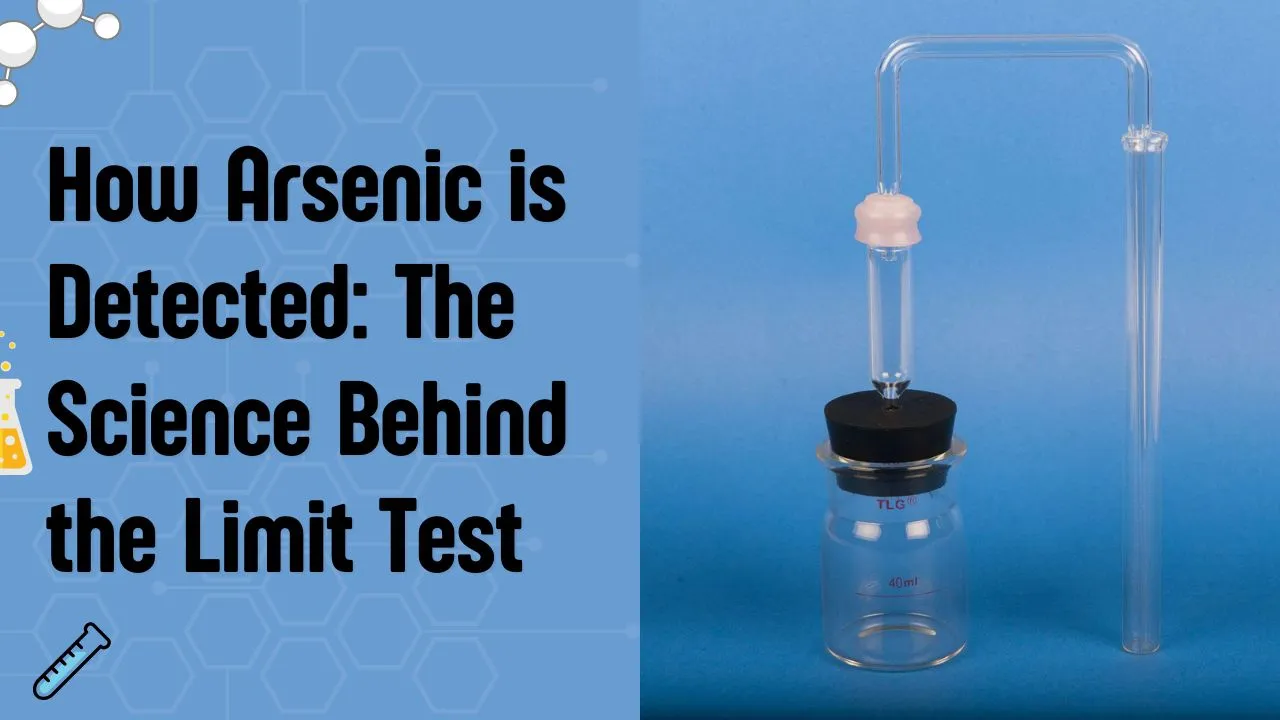The limit test for arsenic is a critical toxoanalytical procedure performed in pharmaceutical and chemical industries to identify and measure the presence of arsenic in very small amounts in substances. Arsenic in itself is an element that is toxic and can very harmful to humans, and so steps must be taking to monitor it. As with any toxic element, limits need to be established so that pharmaceuticals and other human consumable products are safe to use with regards to arsenic content. The test determines that these standards are pharmacopeial ones which pertain to safety, efficacy, and compliance.
Purpose of the Limit Test
The main purpose of the limit test on arsenic is to ensure that the quantity of arsenic is lower than acceptable levels stipulated by pharmacopoeias. These pharmacopoeias include: United States Pharmacopeia, British and Indian Pharmacopoeia. Identifying arsenic’s presence is critical because it can inflict fatal health consequences such as cancer, organ damage, and skin lesions.
Principle of the Test
Bound arsenic in a sample is transformed into ions and subsequently into gases via a sequence of chemical reactions. The limit test for arsenic relies on the principle of transforming all forms of arsenic in a sample into gases such as arsine (AsH₃). Mercuric chloride paper, on which highly poisonous arsine gas reacts, forms a yellow to brown stain.
Steps of the Procedure
The procedure entails several steps:
- Preparation of Samples: The meth test sample is dissolved in an acid and the arsine gas collecting apparatus.
- Reduction Process: Any arsenic contained in the solution is reduced to arsenious acid by potassium iodide and stannous chloride.
- Synthesis of Arsine: Zinc granules are introduced to the solution where they are reacted. The reaction yields hydrogen gas which reduces arsenious acid to arsine gas.
- Detection: The produced arsine gas is then passed through a glass tube containing filter paper impregnated with mercuric chloride. If arsenic is present, the paper would change color forming yellow brown stain.
- Comparison with Standard: The test is completed with the comparison of the intensity of the color on the test paper with the Arsenic standard solution. If the test stain is lighter than the standard, then the sample is passed.
Machinery Utilized
Generally a Gutzeit apparatus is used. It includes a conical flask, which comes with a matching stopper, and an interferer gas lead acetate wool plug. Furthermore, the apparatus contains the glass tube that stores the mercuric chloride paper. Due to the toxic nature of arsine gas, the setup must be airtight to contain it.
Precautions
The test must be performed behind a well-ventilated fume hood because of the poisonous arsine and arsenic compounds. Gloves, goggles, and lab coats as a protective ensemble (PPE) must be worn at all times. Mishandling and the use of contaminated reagents can expose the user to toxic gases or pesticides.
Significance in Industry
Pharmaceutical industries need to prove that the raw materials, intermediates, and the final product do not contain arsenic above an unvitae level. They need to carry out extensive testing for such contaminants because they pose a danger for prolonged exposure. The limit test for arsenic is also relevant in the food, cosmetic, and environmental industries.
Modern Alternatives
There are still other forms of the traditional limit test that are practiced such as checking for the presence of arsenic, however, modern techniques like Atomic Absorption Spectroscopy (AAS) and Inductively Coupled Plasma Mass Spectrometry (ICP-MS) analyze and detect the trace elements with higher sensitivity and accuracy. Regardless, these methods do offer automated processes, precision and lower detection limits, but expensive equipment and skilled professionals are a necessity.
In conclusion, the limit test for arsenic remains one of the most basic and fundamental tests in analyzing chemistry. The traditional test is more useful and efficient in rapidly removing arsenic in environments where resources are scarce, despite the existence of more sophisticated techniques.

